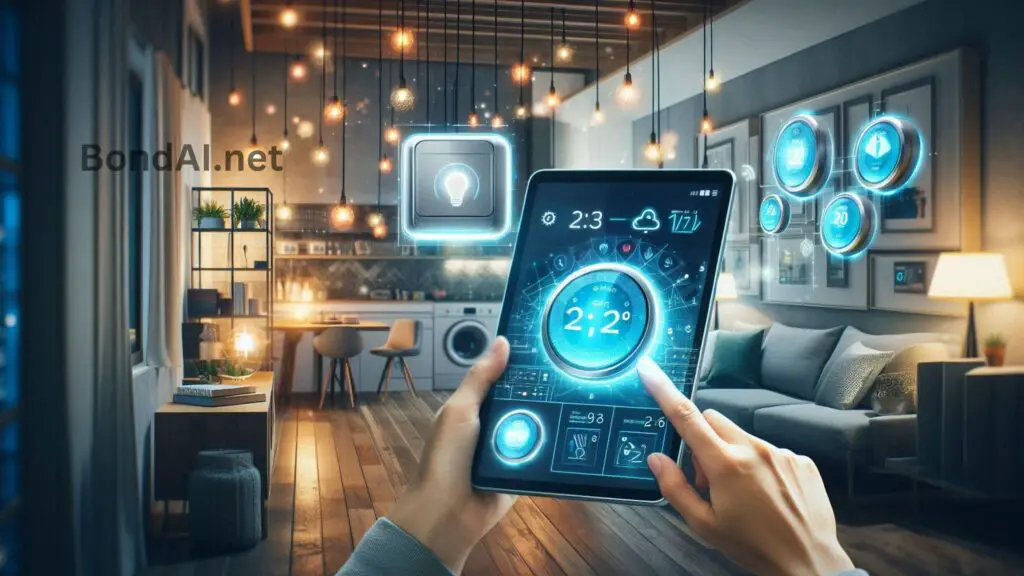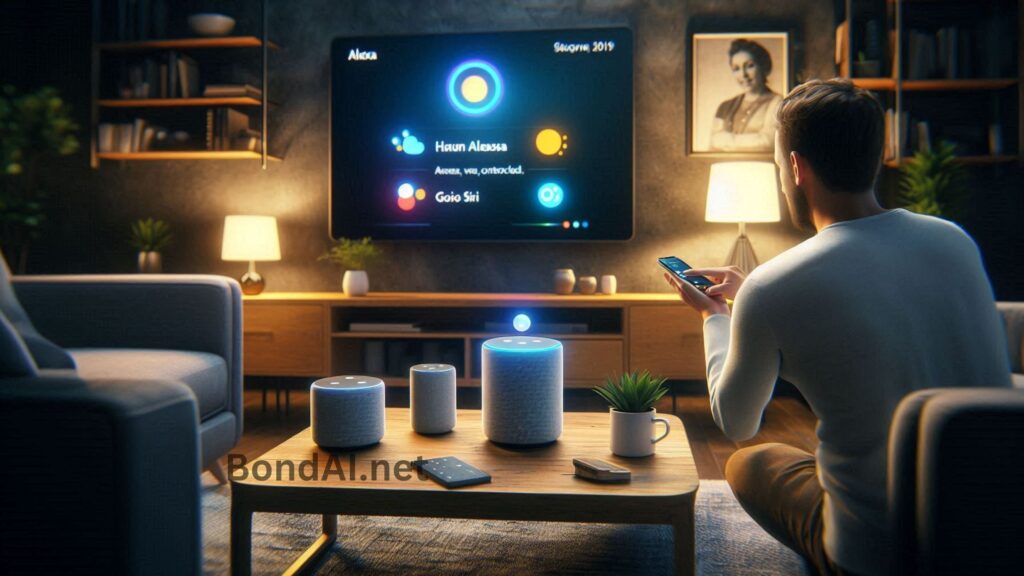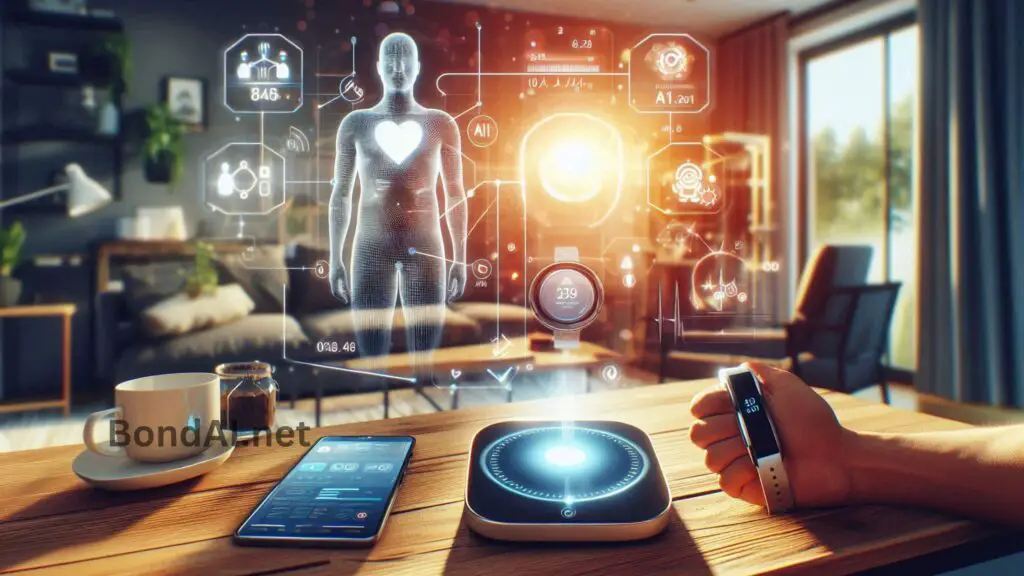AI has the power to completely change how we interact with our homes, making them smarter, more efficient, and better at meeting our needs.
By using technologies like machine learning, natural language processing, and computer vision, we’re entering a new era of home automation that’s much more advanced than just setting up basic routines.
AI-powered systems can analyze tons of data from sensors and devices, learn from how we use them, and make smart decisions to improve things like comfort, energy efficiency, and security.
Let’s dive into some cool ways AI is making smart home automation even better, focusing on the tech that makes these upgrades possible.
1. Enhanced Energy Management with AI-Powered Metering
AI-powered energy management systems are leading the way in smart home tech, giving homeowners incredible control over their energy use. These systems use advanced algorithms like neural networks and reinforcement learning to track energy patterns and improve how energy is distributed throughout the home.

By using methods like time series analysis and predictive modeling, AI can predict energy needs, adjust usage in real-time, and even work with smart grids to help with demand response programs. With edge computing, decisions are made quickly at the device level, which reduces delays and makes the system more responsive.
These systems help homeowners keep track of their energy consumption more accurately, saving money and reducing environmental impact. Machine learning also allows the system to keep improving, adjusting to changes in household habits and outside factors like weather. Want to learn more about ByteSnap’s energy solutions?
2. Intelligent Security Systems with Machine Learning
AI-powered security systems are changing the way we monitor our homes. By using machine learning, these systems can analyze data to spot unusual patterns or events, helping to detect potential security risks in a more advanced way. They combine computer vision tools, like convolutional neural networks (CNNs) for recognizing images, with anomaly detection algorithms to identify any security issues.

Also Read: What are the Top Trends in Machine Learning for 2025?
Federated learning allows these systems to keep improving over time while still protecting user privacy. On top of that, blockchain technology helps secure the logs, making sure that event records can’t be tampered with. Want to learn more about ByteSnap’s smart home security solutions?
3. Voice-Controlled Smart Home Assistants
AI-powered voice assistants have become the heart of many smart homes, making it easier to control different devices and systems with just your voice. These assistants use advanced technology to understand what you’re saying and carry out your instructions. They rely on natural language processing (NLP) and natural language understanding (NLU) to interpret your commands, and the AI models behind them, like BERT or GPT, are great at understanding context, answering complex questions, and even having back-and-forth conversations.

These assistants use machine learning to:
- Understand and act on detailed voice commands by figuring out what you mean and extracting key information.
- Learn your preferences over time, getting better at recognizing your speech patterns and style through reinforcement learning.
- Connect easily with smart home devices using standard protocols, so you can control everything from one central hub.
- Offer personalized suggestions and automation by analyzing your past interactions and preferences.
ByteSnap’s expertise in voice control systems ensures that these AI assistants are both powerful and easy to use. With on-device AI models like TensorFlow Lite or ONNX Runtime, voice commands are processed quickly, while keeping your data private. Plus, transfer learning allows these voice assistants to adapt to different languages and accents, making them useful worldwide.
4. Personalised Automation with AI Learning
Machine learning is helping home systems create personalized environments for each resident, by recognizing patterns and adjusting settings based on their needs.
These systems use different machine learning methods, like reinforcement learning, clustering, and sequence prediction, to better understand and predict how people behave.
By tracking device usage, environmental changes, and how people interact with their devices, these AI systems can build automation routines that improve over time.

Also Read: What are the Best AI Apps for Personal Finance Management?
ByteSnap’s IoT and M2M device development services make it possible to create smart home systems that:
- Learn user habits with time series analysis and pattern recognition.
- Build customized automation routines using decision trees and fuzzy logic for more flexible control.
- Connect multiple devices and systems, ensuring they work seamlessly together using protocols like MQTT or CoAP.
- Continuously adapt to changing needs using online learning, keeping the system’s knowledge up to date.
This level of personalization means every smart home is perfectly suited to its residents. Federated learning allows these personalization algorithms to improve across homes, all while keeping individual privacy intact.
Plus, explainable AI techniques make it clear how decisions are being made, so users can understand and adjust the system’s behavior to their liking.
5. AI in Remote Health Monitoring
As more people age and manage chronic health conditions, many find themselves living alone while juggling various health challenges. This brings up some unique problems, like:

- Higher risk of health emergencies going unnoticed
- Difficulty sticking to regular health routines
- Potential for social isolation and the health issues that come with it
- Struggles with managing complex medication schedules
AI-powered remote health monitoring systems are helping solve these issues by offering continuous, discreet support.
a) Continuous Data Collection and Analysis
AI systems collect and analyze data from several sources, such as:
- Wearable devices (smartwatches, fitness trackers)
- Smart home sensors (motion detectors, pressure pads)
- Voice assistants
- Smartphone apps
These systems use machine learning to learn a person’s normal health patterns and can spot any changes that might signal a problem.
b) Predictive Analytics
AI can also spot early signs of health issues before they get worse. For example:
- Detecting changes in walking that might lead to a fall
- Noticing irregular sleep patterns that could indicate depression or other health issues
- Spotting shifts in daily routines that may point to cognitive decline
c) Emergency Response Activation
If an emergency is detected, AI systems can automatically alert emergency services, family members, or caregivers. This quick response can be life-saving during incidents like falls, heart attacks, or strokes.
d) Personalized Health Recommendations
AI can offer tailored health advice based on a person’s specific health needs and real-time data, such as:
- Reminders to take medication or do health-related tasks
- Suggestions for exercises or activities
- Dietary recommendations based on health stats
These AI-driven solutions help keep people safer and healthier, offering support exactly when it’s needed most.

Also Read: How to Use AI to Improve Online Shopping Experiences?
Benefits of AI-Powered Remote Health Monitoring
- Increased Independence: People can stay independent while still getting the support they need.
- Better Quality of Care: With continuous monitoring, health issues can be spotted and addressed more quickly and accurately.
- Lower Healthcare Costs: These systems help prevent emergencies and encourage proactive health management, which can lead to fewer hospital visits.
- Peace of Mind: Individuals and their families can feel reassured knowing that help is always available when needed.
- Data-Driven Healthcare: The data collected can help doctors make better decisions and create more effective health plans.

